
views
Including Important Information
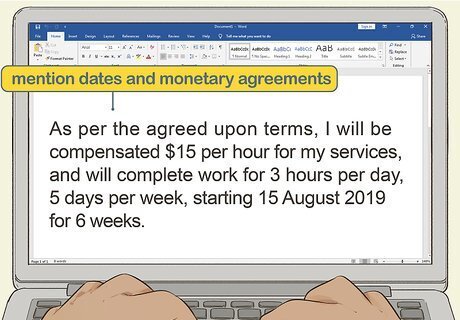
Cover any dates and monetary agreements you came to with the other party. For example, if you are going to be hired at a rate of $23/hour for 40 hours/week starting 15 August 2019 for 6 weeks, clearly state those terms. Also, be sure to include any agreements you came to about who will cover incidental costs, transportation costs, or any other fees that may come up in the project. You can also list other terms of agreement, such as any supplies needed for a project that the recipient has agreed to provide, vacation or sick time, and insurance. List costs as both parties agreed to them. For example, if you quoted an hourly rate, don't switch to a daily rate.
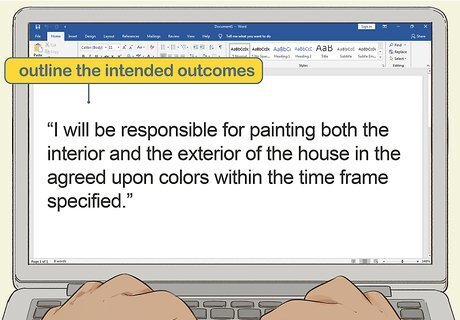
Outline any intended outcomes of the project. Briefly list the main duties you have agreed to take on in exchange for your payment. Outline the scope and outcome of the project you have been contracted to do. None of the outcomes should come as a surprise to the recipient. For example, if you were hired to paint a house, state, "I will be responsible for painting both the interior and the exterior of the house in the agreed upon colors within the time frame specified."
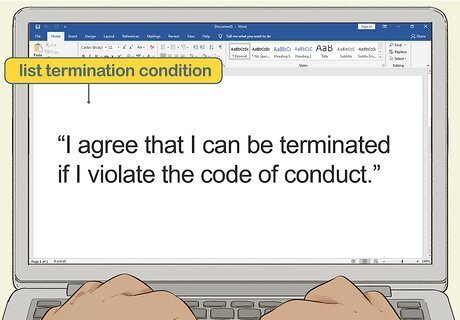
List any conditions of termination. Both parties in the agreement should have the right to terminate the agreement. List any conditions that you have already discussed that would lead to terminating the project earlier than agreed upon. Some of these reasons could include unexpected costs, any unreasonable delays, or either party violating the terms specified in the letter. If your contracting company has a code of conduct, you can simply reference that as a reason for termination. For example, "I agree that I can be terminated if I violate the code of conduct."
Setting the Tone of the Letter
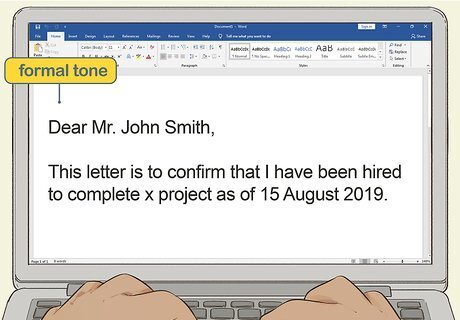
Use a formal tone throughout the letter. Even if you are writing to someone you know well, address them by their full name and title. Avoid using any greetings or informal phrases. After the salutation, jump right into the terms of the agreement. For example, "To Mr. John Smith, This letter is to confirm that I have been hired to complete x project as of 15 August 2019."
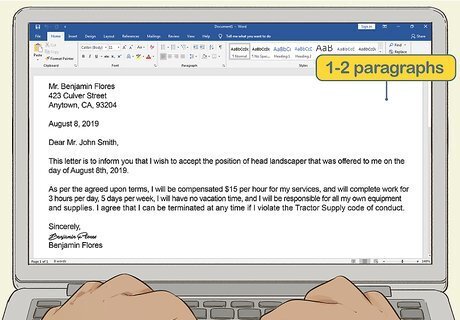
Keep it brief at 1-2 paragraphs. A letter of undertaking should reiterate terms that you have already agreed upon with the other party. Therefore, keep the content brief and straightforward. The other party should already be familiar with the terms, you are just putting them in writing. For some letters of undertaking, you'll only need a few sentences to cover the terms.

Avoid jargon and use clear language. A letter of undertaking is not a formal contract. Therefore, you don't have to cover all of the technical details of the agreement or use complicated jargon. Use straightforward language that anyone could understand.
Formatting and Proofreading a Letter of Undertaking

Use Arial or Times New Roman in an 11- or 12-point font. In order to make an LOU as clear and readable as possible, stick with a standard font and size. This is a professional business letter, so go with established business formatting. In most cases, it's best to use Times New Roman, as this is the most standard font for business writing.
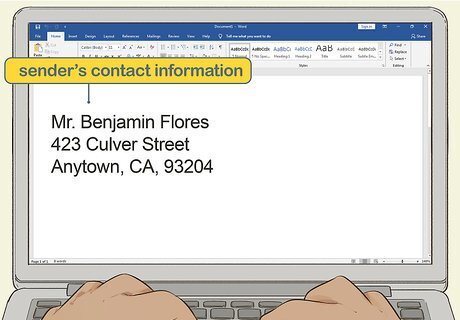
Place the sender's contact information at the top left side of the page. If you are sending an LOU on behalf of yourself, put your own address, including your name, street address, city, and zip code. If you are sending an LOU on behalf of your contracting business, put the address of the business in this block.
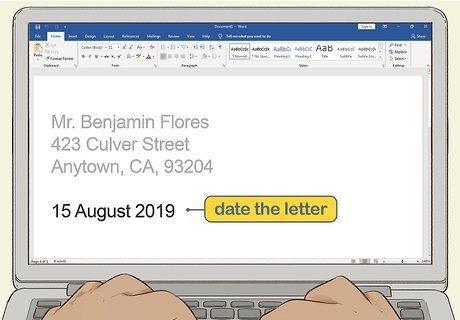
Date the letter underneath the sender's information. Leave a space between the sender's contact information and the date. The date should be the day you finished writing the letter. Follow the format of date/month/year. For example, 15 August 2019.
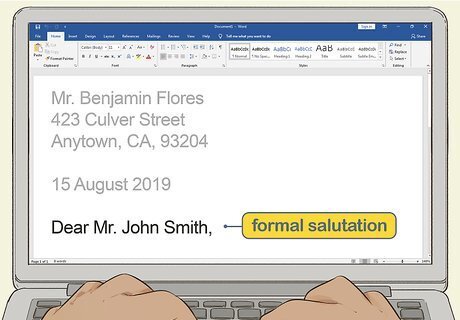
Address the letter to the recipient under the date. Leave a space between the date and the recipient's address. Write out the recipient's name and address in full. Leave one more space and then write a salutation. The most common salutation is "Dear" followed by the recipient's full name. If you know the person's name and title, write it in full. For example, Dear Mr. John Smith. If you don't know exactly who you are writing to, say "To whom it may concern" or the name of the office you are sending the letter to. For example, "To the Office of Student Affairs."
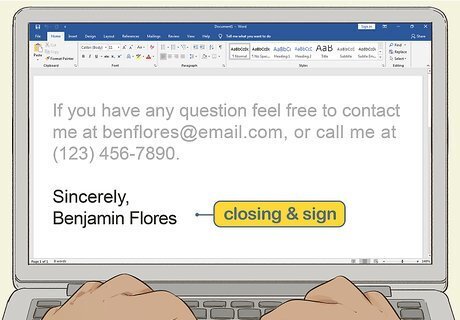
Use a closing and type your name underneath your signature. Common closings include "sincerely," "best regards," or "thank you." Leave four spaces underneath the closing, then type out your full name and title. Print and sign your name using a blue or black ink pen. Although it can be tempting to sign your name digitally, it is best to physically sign, as a Letter of Undertaking is a legally-binding business agreement.
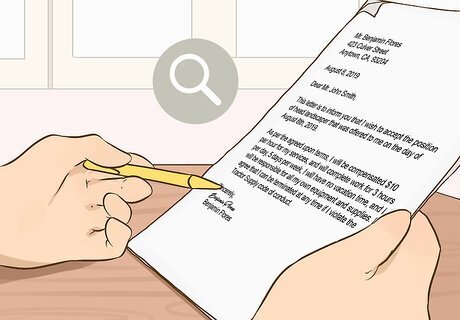
Proofread your letter before sending it. Since a letter of undertaking is a business agreement, make sure that it is as professional as possible by proofreading for any spelling or grammar mistakes. Make sure that all of the important information is included and that the letter follows the format of a business letter. Once you have proofread your letter and made sure everything looks correct, you can sign it in good faith.



















Comments
0 comment